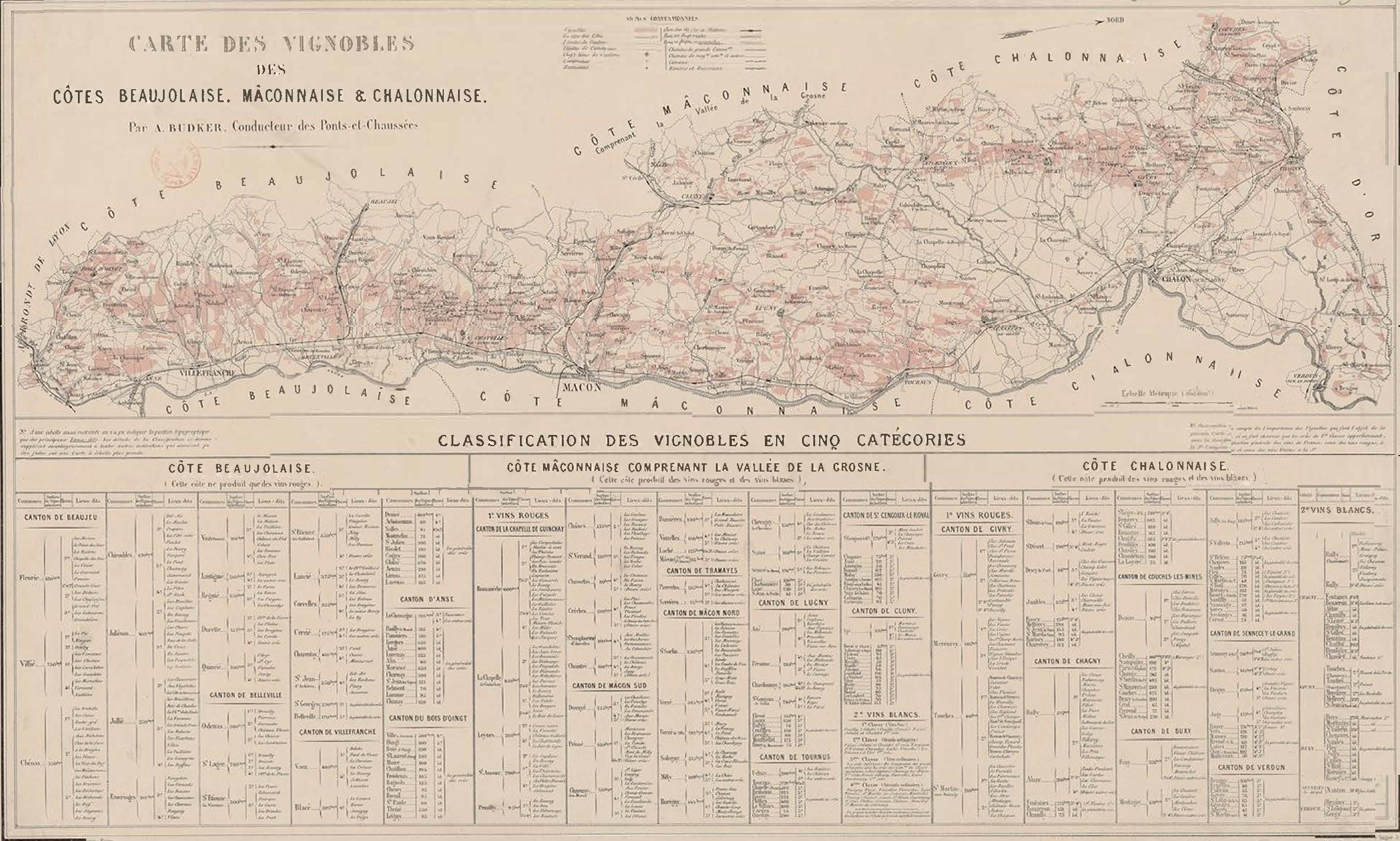
Here is a detailed and meticulously hierarchized map in five classes of cantons, communes and localities conceived by A. Budker, that Vermorel and Danguy take up and complete in the book Les vins du Beaujolais, du Mâconnais et Chalonnais (1893). Their conclusions are impressively precise and current: all the "first class" localities are located in Moulin-à-Vent, Fleury, Côte de Brouilly, Juliénas and Morgon. The 20th and 21st centuries will not do much better. What does this mean? That Beaujolais has experienced a history, if not glorious, at least tumultuous (magnificently recounted by our chief historian Sébastien Durand-Viel) not without consequence on the current perception of both the wine lover and the professional. "Perception" because there is every reason to believe that it is not knowledge supported by exhaustive and repeated tastings, allowing to update if not revise one's opinion towards the wines of Beaujolais and more broadly of the French wines. It is an observation rather than a reproach because the possibility of forming an opinion from almost daily tastings under optimal conditions (blind tasting, in the same vintage, with suitable glass management as very well explained by Hervé Romat and Jean-Christophe Crachereau in the French magazine Revue des Œnologues n°188) is an exercise reserved for professional wine critics.
While the theory is accessible, the practice is much less so, often due to questions of time, skill, means, and networks. It is also tedious, let's face it, like all professions where competence relies mainly on the incessant repetition of the same gesture, where the ordinary, coupled with heightened sensitivity, eventually becomes surprising. Because it is by deeply plowing the same furrows that one ends up understanding, avoiding traps, moderating our enthusiasm, without, however, holding back our joy of discovering a new vintage, a new cuvée, or a new estate.
To enrich their readings with a relevant selection of wines, both professionals and wine lovers must place their trust in professional critics, at least if the selections display total independence, rely on recognized skills (first by the wine growers) and are based on clear and circumscribed discourse. Whether one agrees or not with these selections is another question, that of pluralism, which should not obscure the intellectual mechanics of criticism, based on experience, knowledge, and education, which work and curiosity can enrich. La Tulipe Rouge has in its team professional, seasoned, and passionate tasters who are committed to sharing the results of their tastings in the best way possible. Whether it is with winemakers (LTR is the only guide to also be accountable to the winemakers), amateurs or professionals, LTR takes care to deliver - without conflicts of interest and free of charge - its results with professionalism and integrity. Happy reading.
Olivier Borneuf - LTR
